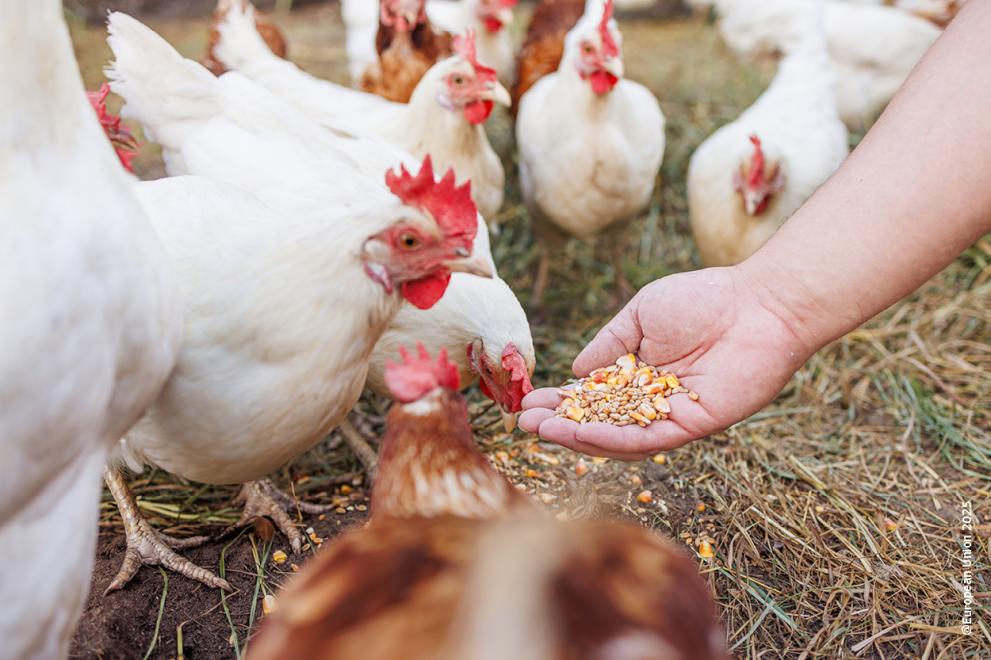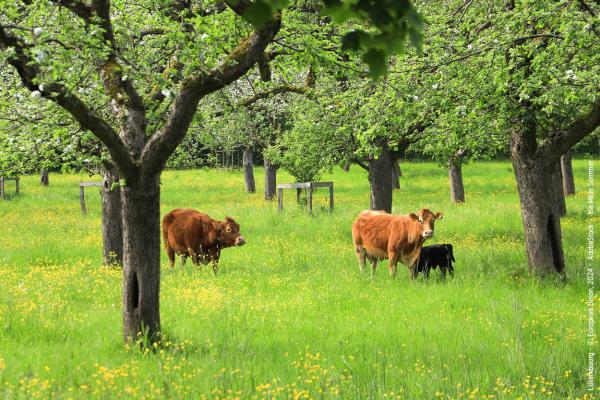Flax production in the EU
Flax, also known as linseed, is a crop grown in the European Union for its fibre and seeds. It provides a sustainable source of raw materials for a variety of industries such as textiles, food, and other bioeconomy sectors. Flax cultivation in the EU is concentrated primarily in Western and Northern Europe, with France, Belgium, and the Netherlands being the leading producers.
Over the past decade, the area under flax cultivation in the EU has grown substantially, primarily due to market conditions. From 2014 to 2024, the total area under fibre flax cultivation in the EU has more than doubled, from 80 000 hectares (ha) to 182 000 ha.
Flax cultivation and processing of fibres
Cultivation
Flax is usually sown in early spring, in March and April. It is a relatively fast-growing crop, with a vegetation period of around 100 days in the EU, depending on the latitude. The plant reaches a height of around one meter. After a brief flowering period, flax is harvested by pulling out the whole stem, instead of reaping. This technique ensures long fibres, which are essential for textiles production.
Retting
After pulling the stems, they are carefully laid on the field in windrows and left there several weeks to decompose naturally, while being turned regularly. This process is called retting and is aimed at dissolving the pectin that keep the fibre and woody part of the stem together.
Scutching
Retting makes it possible to extract the long fibre from the stem. The retted stems are processed further at a scutching facility. The woody parts of the stem are mechanically broken up to bring out the fibres. During this process, all parts of the plants (long fibres, short fibres, seeds, shives, flakes, dust) are separated and collected to process further.
Uses of flax
Flax and its products are used in various industries and contributes to the bioeconomy, including:
 Textiles
TextilesLong flax fibres are used to produce linen, a high-quality fabric for clothing, household textiles, and industrial applications. After scutching, the long fibres go through a process of combing, spinning and weaving to create the fabric.
 Food
FoodFlax seeds are a rich source of omega-3 fatty acids and dietary fibre. They are used in the production of food products such as bread, breakfast cereals, and health supplements. Flax seed can be pressed to extract linseed oil, which is an omega-3 rich edible oil.
 Biobased products
Biobased productsShort fibres are further processed to other biobased materials. Flax fibre can replace glass fibre in plastic composite materials used for consumer goods or in the automotive industry. Other applications of short fibre are composite furniture or insulation mats for housing.
Linseed oil has polymer forming properties, which makes it suitable to be used as varnish, in oil paints, and in the production of linoleum.
 Feed
FeedLinseed meal is a co-product linseed oil extraction, which has a high protein content and is used as animal feed. Flax seeds from fibre flax are used as a natural source of protein and energy in animal feed.
Flax in the CAP
Under the common agricultural policy (CAP) farmers growing flax are eligible for direct payments. EU countries can choose to grant additional support by designing eco-schemes that may benefit flax cultivation or in the form of coupled income support. For the programming period 2023-27, Poland offers this type of coupled support to flax growers.
EU countries have to share with the Commission market data on product prices and production of flax. The Commission uses this information for the purpose of monitoring, analysing and managing the market.
In case of a market disruption, the Commission can implement private storage aid for flax fibre to stabilise the markets and ensure a fair standard of living for the agricultural community (article 17 of Regulation (EU) 1308/2013).
Contribution of flax to sustainable agriculture
- Environmental: flax fits in good and sustainable agriculture practices. It has low fertiliser, needs, is rain fed and should be grown in rotation in 6–7-year intervals. The crop improves soil structure due to the roots and the limited soil and has a lower impact on biodiversity compared to other common arable crops.
- Social: particularly the production and the primary processing of flax provides jobs in rural areas. Spinning and weaving is mainly done in third countries, but is processing capacity is growing again in EU, increasing employment opportunities in rural areas.
- Economic: flax cultivation contributes to a viable income of farmers, providing valuable resources for the bioeconomy.
Legal basis
Regulation (EU) 2021/2115 – establishing rules on support for strategic plans to be drawn up by EU countries under the common agricultural policy (CAP Strategic Plans).
Regulation (EU) 1308/2013 – establishing a common organisation of the markets in agricultural products.
Commission Implementing Regulation (EU) 2017/1185 laying down rules for the application of Regulations (EU) No 1307/2013 and (EU) No 1308/2013 of the European Parliament and of the Council as regards notifications to the Commission of information and documents.

